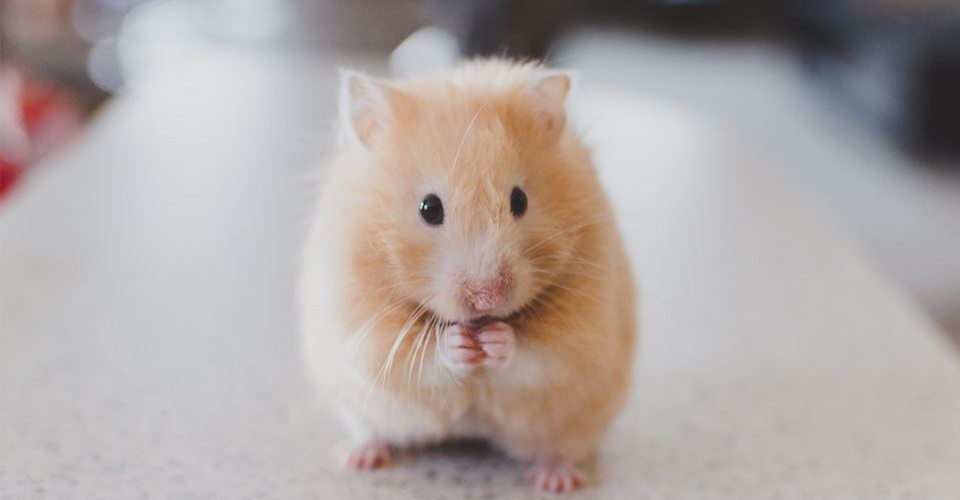
Small animals that live in cages or tanks may not be as common as dogs or cats for pet owners, but that certainly doesn't mean they are any less important. Small pets require delicate care when it comes to moving as their needs differ from larger animals.
Read the following information on how to prepare your small animal for your big move!
TIP: Check for special state laws or requirements that may restrict the importation of your rodent or cold-blooded friend. For example, reptiles and amphibians require registration and/or special licenses, so prepare ahead of time to get all the necessary documentation.
Bring your small pet to the vet before moving
No matter where you're moving, you will likely need proof of updated health records for your pet, like a signed health certificate, especially if you plan on traveling by air or shipping your animal. It is best to have your pet examined by a veterinarian prior to your move, and get them up-to-date with any shots.
Ask your vet for useful advice on keeping your pet safe and healthy during the move. Your pet needs to be in top shape to travel as moving can be stressful on small animals. Many airlines will not accept a sick pet.
Choose your mode of transportation to relocate your pet
Typically, your pet will be traveling to your new home via one of these methods:
-
As carry-on luggage on an airplane
-
As checked baggage or cargo on an airplane
-
Shipped via overnight mail (for certain animals)
-
Accompanying you during car travel
TIP: Full service movers will not transport any live animals in the moving truck, as air quality is not suitable for your animal companion.
If your pet is traveling as cargo, you will need to drop them off a few hours before the flight departs. Feed your pet approximately five or six hours before the flight is scheduled to leave.
-
For packing fish use plastic containers with battery operated aerators. Then place those containers in the actual shipping containers and label with your pet's name and species. Move your aquarium separately in a wooden crate to prevent damage.
-
For packing turtles or other small reptiles use a packing box lined with Styrofoam with holes for your pet to breathe. Add some grass clippings to the bottom as well as a damp cloth inside to stay moist. Write "FRAGILE: LIVE ANIMAL" on the box before sending via overnight mail.
-
For packing amphibians use a Styrofoam cooler and line with some newsprint and soft ice packs (nontoxic). Place your frog or other amphibian in a small plastic container lined with leaves or grass from its original tank, then place the plastic container inside the Styrofoam cooler. The cooler should then be placed in a clearly marked shipping box.
Prepare your small pet for the move to ease anxiety
While different types of small animals will vary in terms of how you should prepare them, there are a few general things you can do prior to your move to get them ready to go:
-
Buy a pet carrier. Your small pet's cage or tank may not be suitable for any kind of commercial travel, so make sure you ask for details from your airline about what type of container you can load your pet in. If you're driving, the carrier should be well-secured and away from direct sunlight.
-
Place your pet in the pet carrier prior to moving. Get your pet used to the travel container before traveling. Slowly increase how long you leave your pet in the carrier each day leading up to the move.
-
Add familiar comforts to the carrier. Small animals, even reptiles and amphibians, enjoy small toys or familiar elements from their everyday environment. If your lizard had a fake plant in his tank, see if you can add that to the travel carrier.
Travel with your small pet by car for the least stress
Taking your small friend with you in the car if the most comfortable and least stressful way to transport them to your new home. It's the easiest way to check on them during the move and keep your pet happy and calm during transit.
-
Keep the temperature consistent. Small animals are very sensitive to temperature changes. A light breeze can give a hamster pneumonia, and your snake probably won't appreciate super cold temperatures, either.
-
Take your pet inside during overnight stays. You don't want to leave your small animal alone in a cage locked in a car overnight. Stay in a pet-friendly hotel and give your little friend the opportunity to run, hop or slither around for a bit.
-
Take breaks when you need them. It may be harder to tell if a small animal like a ferret or chinchilla is stressed from a car ride (versus a dog or a cat). Pulling over every few hours to give your small animal attention will go a long way -- especially since smaller animals tend to get stressed easily.
-
Bring any medications your pet needs. If you are traveling by car because your pet is ill or not fit to be shipped on a plane, have the proper medications with you. Schedule breaks to administer the medication, including some time for food and water (the water should be from your previous home for familiarity).